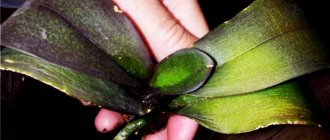The color palette of Saintpaulias is quite rich, including mainly white, pink, blue, lilac, red, burgundy, and purple shades of varying degrees of saturation. Extraordinarily beautiful are the fantasy varieties with various spots, splashes, splashes of a different, contrasting color, as well as chimeras - with a characteristic transverse stripe in the center of the petal! In addition, Saintpaulias have now appeared, albeit not with purely yellow, but harmoniously mixed flower colors, for example, like the “Scythian Gold” violet.
Many gardeners consider “Gold of the Scythians” to be one of the most successful in the group of yellow-colored varieties
Description
Violet Zlato Skifov (LE) is distinguished by large double flowers of white-yellow color with a pink uneven border. The blooms look stunning when contrasted with the dark green foliage. The flower stalks are strong enough to support large flowers.
Violet Zlato Skifov
In a flower that has not yet fully bloomed, the petals often have a light, monochromatic color that looks golden in certain lighting. Brighter color appears as the plant grows and develops.
AB Gold of the Scythians
Among similar varieties of Saintpaulia, one can distinguish the varieties “LE Zlata” and violet “Gold of the Scythians AB”. Moreover, the violet of breeder Alexei Valkov is almost identical, except that the border is pink in a more delicate shade.
Violet "LE Zlata" was released in 2022. The main difference between this variety is the purple border.
This is interesting: the Scythians are the largest tribe living in the territory of what is now Ukraine and Moldova in the 1st millennium BC. A unique collection of Scythian gold is kept in the Museum of Historical Treasures of Ukraine.
Reviews
Reviews on gardening forums are mostly positive.
Sergey. “It turned out to be a very spectacular sport. What suits me about it is that the leaves are fat, the flowers are bright, the rosette is even, and there are a lot of offspring.”
Alla Vladimirovna. “Finally, my Wild Cherry tree has blossomed. I really like the color, but the flower is a little small, I hope it will be better next time - it’s a first year.”
Violet has only positive reviews from gardeners.
Features of violet care Zlato Skifov
Violets Zoloto Scythians (AV) and Zlato Scythians (LE) are almost identical in care:
Violet Shining bell - description of the variety
The most important rule for maintaining color saturation and the appearance of the border is maintaining the temperature regime. For any Saintpaulia, temperatures above 30 degrees are fatal. As for varietal specimens, during the period of flower stalk formation it is best to maintain the temperature from 17 to 23 degrees. Scythian gold in cooler conditions often exhibits a green border.
Attention! The myth that violets love shade has destroyed a considerable number of plants.
The lighting of the violet must be correct. Saintpaulias love bright but diffused light. Lack of lighting leads to a lack of flowering and leaves stretching upward. And at the same time, too intense sun can burn the leaves. Therefore, it is best to shade southern and south-eastern windows with blinds or glue special paper to the windows. In winter, it is important to organize lighting.
Violets of these varieties do not like excessive watering, as well as severe drought. The soil is watered as the top layer dries a centimeter. The water should be settled and not cold. As for wick irrigation, the requirements are similar.
Important! Spraying the flowers or leaves is not necessary and may even ruin the plant.
But periodic bathing removes dust from sockets. You can wash the violet directly under the tap, gently tilting the leaves. After this, the pot is left in a place without drafts to dry for a couple of hours. When bathing, the ground should be covered with film.
High humidity, contrary to popular myth, is not needed at all by violets. Moreover, in low temperature conditions, excessive moisture can lead to rot and mold. During the heating season, if dry tips begin to appear on the leaves, it is best to use a humidifier (it is useful for both flowers and people).
Soil is the most important rule in successfully growing the LE Zlato Skifov flower. Ordinary soil will not work because it gets wet quickly. The ideal solution is high-moor peat (40 percent) and ripper (perlite, foam balls, vermiculite).
Any variety of Saintpaulia requires frequent fertilization and soil changes. With a lack of nutrients, the Zlato Skifov violet loses the rich color of its leaves, does not bloom, or the buds become smaller.
By following all the rules, you can achieve perfect flowering.
Breeding history
The variety was bred by Ukrainian florist Elena Lebetskaya in 2015. Elena Anatolyevna has been engaged in breeding work since 2000. He is the author of more than 400 varieties, a regular participant in exhibitions in his homeland and in Moscow.
The rosettes of the varieties she created are distinguished by their compactness and abundant flowering. Saintpaulia Lebetskaya is characterized by a bouquet type, that is, during the flowering period the plant produces a neat bunch of buds.
Each peduncle usually contains 2-4 buds
How to propagate Zlato Skifov violet at home
What a violet looks like - description of the plant
Saintpaulia can be propagated in three ways:
- Seeds. The option is most often used by breeders.
- Leaf cuttings.
- Peduncles (in the case of chimeras).
The most common option is to take a leaf cutting. It should be cut with a sharp blade (wipe with alcohol); the leaf is needed from the second row. You need to choose specimens without stains or defects.
Next, you need to either put the cutting in water until roots appear (then place it in the ground), or immediately root it in the ground.
To do this, pour a mixture of perlite and peat in a ratio of 60 to 40 into a small plastic glass. Place the sheet to a depth of up to a centimeter and strengthen it in the ground. After this, it is better to place the cuttings in a greenhouse - here the processes will go faster.
Rooting a violet leaf
After about 2 weeks, the leaf will take root, and in a month - babies. The latter should be planted as soon as at least 4 leaves of at least 2 centimeters in size have grown.
Incorrect planting of violet babies
Evening primrose - flower of the evening dawn
author Petrov Yu.V., photo by the author
The nature around us is so diverse and unusual that if you look closely, you can find something amazing very close by. For example, the garden flower evening primrose, or aspenberry, which has another name: “night candle”. I and many who have seen it bloom never cease to be amazed at this sight.
The genus Evening primrose (OENOTHERA) belongs to the fireweed family. There are 80 known species of evening primrose, distributed mainly in North and South America and Europe. These are annual, biennial and perennial rhizomatous plants with a height of 30 to 120 cm. Large evening primrose flowers (yellow, pink or white), collected in brushes, open in the evening and at night, and during the day - only in cloudy weather.
Common types of evening primrose include:
- Evening primrose Drummond
is an annual or biennial plant, 30 to 60 cm high, with large bright yellow flowers; - Evening primrose red sepal
- biennial, up to 100 cm high, has red buds and yellow flowers; - Evening primrose shrub
- perennial, 90-120 cm high, large yellow flowers; - evening primrose quadrangular
- perennial, peduncles 45 cm high grow from a basal rosette, blooms in June-August; - Evening primrose is perennial
- cultivated as a biennial, flower stalks up to 25 cm high, small flowers up to 1.5 cm in diameter appear in May-June; - Missouri evening primrose
- creeping, erect stems, 30-40 cm long, with large flowers with a diameter of 10 cm (as a perennial it is suitable mainly for the southern regions); - evening primrose
- grown as a biennial plant; the flowers are yellowish-reddish.
For many years now I have been growing biennial evening primrose OENOTHERA BIENNISL in the Moscow region. The effect it produces when flowering is comparable to a fairy tale, and remains in the memory for a long time. Many years ago, an acquaintance came to see me with his wife and six-year-old daughter. The sun was approaching the horizon when we accidentally found ourselves in the garden next to the evening primrose bushes. Suddenly the evening primrose came to life: the bushes began to move. The girl was the first to notice this. You should have seen with what delight the child, her mother and father watched as large, yellow evening primrose flowers - the color of the sun itself - opened before their eyes! “Here’s another one, and here’s another, and here, and here...” voices were heard. There were many buds on the evening primrose bushes. Rolled into tubes, the buds rapidly unfolded within two to three seconds and turned into large, up to 7 cm in diameter, silky, fragrant, saucer-shaped flowers. This performance lasted all evening - until the last flower blossomed, in which enough energy had accumulated to open its curled petals to the world. ...This girl has grown up. Just recently she told me that evening primrose flowers are forever preserved in her memory - they are one of the most vivid memories of her childhood.
After blooming at night, evening primrose appears in all its glory in the morning. Before lunch, insects have time to visit its flowering bushes. The flowers then close and new flowers open in the evening. And so all summer - from June until frost. On cloudy days or in the shade, evening primrose flowers open during the day.
Evening primrose is winter- and drought-resistant. The plant is not demanding on soil; it grows well on any soil - sandy loam, loam, garden soil. When planting evening primrose, you must choose a place where water does not stagnate during thaws and snow melting in order to avoid damping out of the rosettes that form in the first year. Evening primrose is propagated mainly by sowing seeds in open ground in spring and early summer (from April to June) or before winter. When sown early for seedlings or in a greenhouse, evening primrose blooms in the first year.
Evening primrose seeds are small and ripen well; remain viable for 3-4 years. Due to the small size of the seeds, in order to avoid their loss, it is more reliable to grow evening primrose through seedlings. The seeds are buried 2-3 mm into the soil. Vegetatively, evening primrose reproduces by dividing the bush in spring (May) or autumn (September-October). You can also plant young plants that appear around the mother bush.
Evening primrose is suitable for group and single plantings in the garden in a sunny or semi-shaded place.
A few "night candle" bushes will create the illusion of an evening or night fire in your summer garden. Blooming evening primrose is very impressive at night when exposed to electric lighting. Add to this picture the light, delicate aroma of lemon, pleasant smell of evening primrose flowers, which bees and bumblebees love to visit - and you will also want to have this plant. Grow evening primrose! Rejoice! Be surprised and amazed.
Replanting after purchase
If you purchased an adult plant or a baby plant, then they need to be replanted immediately, since the soil may be unsuitable. Choose a container that is approximately 2 times smaller than the outlet. If we are talking about children, you can take 50 ml plastic cups (for example, for children's cottage cheese).
Transplanting violets after purchase
You must make holes at the bottom. Next, expanded clay is poured in and covered with earth.
Note! The violet should be in the container at such a level that the midpoint of growth rises slightly. Place the rosette in the middle and carefully add soil to the sides. Lightly compact.
Appearance of violet VaT Tsar Peas
Saintpaulia VaT Tsar Pea does not belong to the Violet family, as many people think, but to the Gesneriev family. However, due to the great similarity in the colors of these plants, Saintpaulias are often called violets.
Violet WaT Tsar Pea has spectacular white flowers with a purple spot, reminiscent of a fingerprint, on each petal. The purple spots are strewn with pink spots that resemble peas. The flowers are quite large in size and collected in a cap; abundant flowering lasts a long time.
The foliage of the plants is large, beautiful, with a light cream border, giving it a special decorative effect.
The main problems of violets Zlato Skifov
What problems might a gardener face who wants to grow this interesting variety?
- Dark spots on the leaves mean excessive soil wetting and possible problems with the root system. It is necessary to inspect the roots. If they are normal, then we transplant the flower into suitable soil. If they are brown, but the stem is strong, we clean it with a knife and plant it again in fresh soil. A black stem and soft cuttings mean the death of the rosette. Brown spots on the leaves remain when exposed to moisture and further drafts.
- Bacteriosis is manifested by a gradual darkening of the trunk and cuttings; over time, they rot completely. Most often, the disease begins in the heat and affects plants with weak immunity. Therefore, before the onset of summer, it is important to put the collection in order - re-root diseased rosettes, change the soil to light, etc.
- Spider mites often attack Saintpaulias. You can buy a lot of destruction products in stores, but the flowers will have to be removed. When processing, it is important to rinse window sills and pots well.
- Mealybugs most often appear in conditions of high humidity. You can also buy a drug to kill the pest in the store.
With proper care, the violet Zlato Scythians or Zoloto Scythians will definitely thank you with lush and bright flowering. At the same time, the unusual appearance of flowers will certainly amaze other flower lovers and ordinary people.
Features of flowering, growth and reproduction
What else is worth knowing about the Wild Cherry violet:
- Like everything in our world, the development of violets is cyclical :
- Childhood (baby);
- And maturity (adult plant).
Youth (starter);
Plants that are 5-6 weeks old after rooting are called babies . Starter – plant 6-8 months. Mature plant – 12-14 months. Flowering usually begins in adulthood, but starters also sometimes surprise with flowers;
- Lateral processes (stepchildren);
For propagation by stepsons, take a lateral sprout with two pairs of leaves . Cut carefully at the base. They are planted in a peat tablet for 3-4 weeks and transplanted into a pot together with it. Varietal characteristics are conveyed well;
- Wild cherry has beautiful cap blooms . With proper care, the bouquet will bloom 7-9 months a year. The flowering time of the bud is 4-6 weeks.
Feeding
According to the description, the Milky Way violet responds well to regular feeding. Nutrients should be added once every 2 weeks, combining the procedure with watering.
For violets, you need to use special fertilizers, which are sold in any flower shop. But as the plant grows, the nutritional composition should be different.
During the period of growing green mass, fertilizers with a high nitrogen content should be used, and during the formation of buds - phosphorus and potassium. The development and flowering of violets directly depends on strict adherence to this rule.
The use of nitrogen during budding can lead to increased foliage growth and will also negatively affect the color and number of flowers.
Bush rejuvenation
As the Milky Way violet grows, the lower part of the stem gradually becomes exposed, which leads to the loss of decorativeness of the rosette. The situation can be corrected by rejuvenating the bush.
This procedure is carried out in the following sequence.
- Remove the plant from the old pot.
- Break off the leaves from below that are not decorative.
- Using a knife, cut off 1/3 of the bottom of the earthen clod.
- Place the bush in a new prepared pot.
- Gently sprinkle with soil up to the first lower leaves.
- Water the plant with the Kornevin working solution and place it in the greenhouse.
After some time, new roots will appear on the bare part of the stem. After this, move the “milky way” violet to its usual place.
This procedure allows you to renew the bush, as a result of which it begins to actively grow and bloom profusely.
Biography facts and achievements of breeder Tatyana Valkova
Breeder Tatyana Valkova devoted many years to growing plants. She developed various varieties of violets (Sun in the Palm, Dark Wine, Alien, Snow White, Bird of Happiness).
Violet Humako inches - plant features
Tatyana lives in Shakhtersk, in the Donbass, but even military operations in this territory did not force her to give up her favorite pastime. Despite everything, she continues her work and participates in many exhibitions.
Additional Information! By the way, the letters before the name of the variety (in this case, BaT) mean the initials of the breeder who bred it.
The variety prefers good lighting
Diseases and pests on violet Dance of Galaxies
When the Galaxy Dance violet grows in a shady place, the likelihood of overwatering by an inexperienced gardener is high. Overwatering may cause rot of the roots and leaves.
Frequent pests of violets can be mites and worms. The appearance of mites is easy to notice by the small cobwebs under the leaves and the appearance of yellow dots on the leaf. Sick violets should be separated from others and treated with an anti-mite product.
Scale insects are noticeable by a white coating on the leaves and axils of the petals. To combat them, the infected areas are wiped with a soap solution; if the infestation is severe, it is better to buy a special drug to combat scale insects.
Useful tips
The Saintpaulia root system is not able to absorb a large volume of soil . Overflow and acidification of the soil occurs. For the “Dance of Galaxies” variety, a pot measuring 7-12 cm is sufficient.
If you notice that you did not water your violet on time and the turgor of the foliage has weakened a little, do not rush to water the plant as usual . Lightly moisten it with water, and after a day or two, water it again.
This way Saintpaulia will have time to restore its root system, and a strong flood when completely dry will only lead to rotting of the roots, and you will probably lose your favorite variety.
If the cutting is too large, the process of the appearance of babies may be delayed.
Important! To stimulate their growth, the upper half of the leaf blade is cut off.
Lighting
The Milky Way violet variety can be grown on eastern and western windows, as well as on shelves with backlighting. For lush flowering, the duration of daylight should be 12-14 hours, so in the evening it is recommended to use additional lighting. Plants feel great on eastern and western windowsills.
When growing on a south-facing window, you should use shading devices (curtains, blinds), as aggressive sun rays can cause burns on the leaves.
Photo
Do you collect varietal violets? Then be sure to pay attention to the varieties “Raisin”, “Chimera” and “Amadeus”. Perhaps they will become the pearls of your collection.











